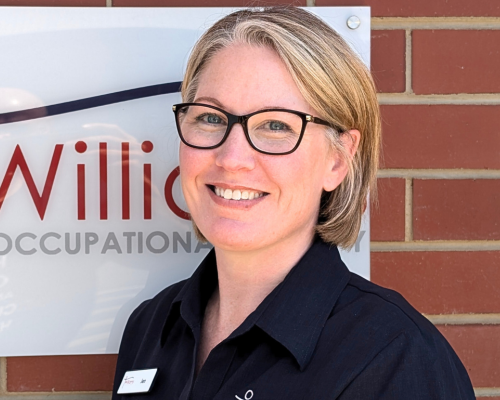Physiotherapists in SA are soon to be paid $220 per hour to provide services to NDIS participants.
OT’s (occupational therapists) in SA are to be paid $190 per hour.
Physiotherapists and OT’s could realistically treat the same patients under NDIS but OT’s would be paid $30 less.
Many complex services are performed by OT’s including driver assessments, complex home modifications, working with intellectual and cognitive disability and multiple physical co-morbidities and making recommendations about the capacity to live alone.
OT Physiotherapists:
4-year degree 4-year degree
AHPRA Registered AHPRA Registered
Same client Same client
$190 per hour $220 per hour
About 90% female About 50/50 male/female
Click this link to read more about price guide and information
In the Mc Kinsey and Company Independent Price Review NDIS Final Report February 2018 they reference a number of fee schedules including DVA OT Fee Schedule (2013) and the DVA Allied Health Schedule (2017), Comcare and Victorian and NSW workers compensation scheme fee schedules. The report also cites examples of simple and complex “Occupational Therapy” treatment scenarios when referencing services provided by Physiotherapists.
Which data was used for OT’s? 2013 or 2017? Why the Eastern States centricity when setting fees related to OT in SA (or the rest of Australia for that matter where the cost of doing business is likely to be higher e.g. WA, NT)
OT Australia has reported that there has only been a 16% increase in remuneration since 2007 for the fees paid to OTs providing services to DVA although the cost of living has gone up 28%.
OT’s are being disadvantaged by historically poor remuneration rates being used (again) for the basis of pricing and valuing our work.
Why can SA based Physiotherapists be remunerated at the highest rate from the range of data available?
Why hasn’t any SA data or other fee schedules been used as references for OT’s when setting fees for OT’s in SA (and Australia wide)? e.g. RTWSA OT fee schedule, Lifetime Support Authority data, WA WorkCover. Why isn’t the physio and OT hourly rate the same?
Have OT’s traditionally not been assertive enough?
Is now the right time to correct this historical blip and respect our OT’s?
Is this a gender issue? Gender pay gap is about 15%. 15% added to $190 is close to $220.
Are there any physiotherapists who will step up and support their OT colleagues in calling for fairness and equity?
This independent review needs review.
I think we should all ask for a transparent explanation of the data used to calculate the rates for the professions.
The reference data they cite in the report is DVA, Comcare and Victorian and NSW data.
We should also ask how they can justify the following statement only in relation to Psychology and Physiotherapy practice.
“Psychology and physiotherapy have higher and differentiated regional price limits based on analysis of existing NDIS providers and the national market. These price limits align with adjacent markets and will encourage providers to enter the Scheme.”
If you would like to raise a concern about the updated fee schedule the email address is
Please raise this with the NDIS Commission, your local MP and the minister. Do whatever it takes.
NDIS workforce data shows a mass shortage of allied health professionals able to service NDIS, particularly OT’s so not sure how remunerating OT’s at a lower rate will facilitate their entry to the scheme.
This is written by our guest blogger, Nicole Nott.

Nicole is the founder of three healthcare businesses in the areas of occupational health, paramedical services and business consulting.
Her company, Sitemed, was recognized with both a South Australian and a National Telstra Business Award in 2012 where the judges commended her innovation and business acumen.
Nicole founded Praktis Partners in 2017 to support allied health and wellness professionals to start, grow and leverage their own private practices.
Nicole believes allied health professionals are perfectly positioned to be agents of change in the community; to activate health and wellbeing, facilitate engagement, and create joy- but they need assistance to unlock their business potential.
Nicole’s goal is to leverage her experience to fast track private practice success for allied health and wellness practitioners wanting to start and grow their own businesses.
Nicole is passionate about Occupational Therapy and is a strong advocate for the profession and she is seeking assistance from the profession to lobby the government and NDIS commission to ensure Occupational Therapist’s receive fair remuneration.
Thank You
As CEO of Williams OT, I thank Nicole for writing this piece and agreeing to share it.
Nicole is a vocal leader in the OT world and continues to stand up for the profession. I am proud to know her and have learned so much from her. She is currently featured in the current Connections magazine put out by the Australian OT Association and is an advocate for all OTs.
There are many comments around already about the price guide increase from $179/hr to the new rate due for release on 1/7/19. As CEO of Williams OT, I am not arguing one way or another if a rise is equitable or fair. I am with Nicole and many other OT’s here.
I am, however, arguing that a price rise should be fair and equal between similar professions with similar qualifications. The professions are seen as equal when it comes to pay structures by our governing body AHPRA. This appears to be another bureaucratic, NDIS issue that can not be easily explained. But then again, that might just be the entire NDIS system. I put this alongside the following:
- that a participant is expected to have a car of three years or less, or under 45,000km if they want vehicle modification of anything greater than $500. We are not sure how people on a disability support pension are meant to afford this? I don’t even buy a car of this age.
- That modifications are not being approved unless the car has been pre-purchased. How can someone be expected to buy a car in the hope that modifications might be approved? For some clients, this means that they may need to run 2 cars and miss out on a trade in.
- That the new Vehicle Modifications AT application requires so many signatures and follow up paperwork from all parties. This adds costs and further funding issues on participants already tight budgets.
- That once a vehicle modification application has been lodged, that, in general, it does not get looked at until the next funding meeting, which can be close to 12 months after the original assessment event. It is only then that NDIS raise questions. If the questions don’t get answered in time, then they may need to wait another full year (as has happened to some of our clients).
- That NDIS seems to be more regularly underfunding specialised driving instructor lessons with the argument “all people need to learn to drive, the cost should be the burden of the participant”
- That escalating an issue goes nowhere.
Where to from here
We are aware that the AHPA (Allied Health Professions Australia) has lodged a letter with NDIA regarding the price review. The link can be found here
The OT association has also submitted a response to NDIA. To read the response you can access it here
We encourage you to make comments below and raise awareness.
Please share this article with people that you know may take interest. From comments made on Facebook thus far, there are many preconceived ideas around this story. Please spread the word.



